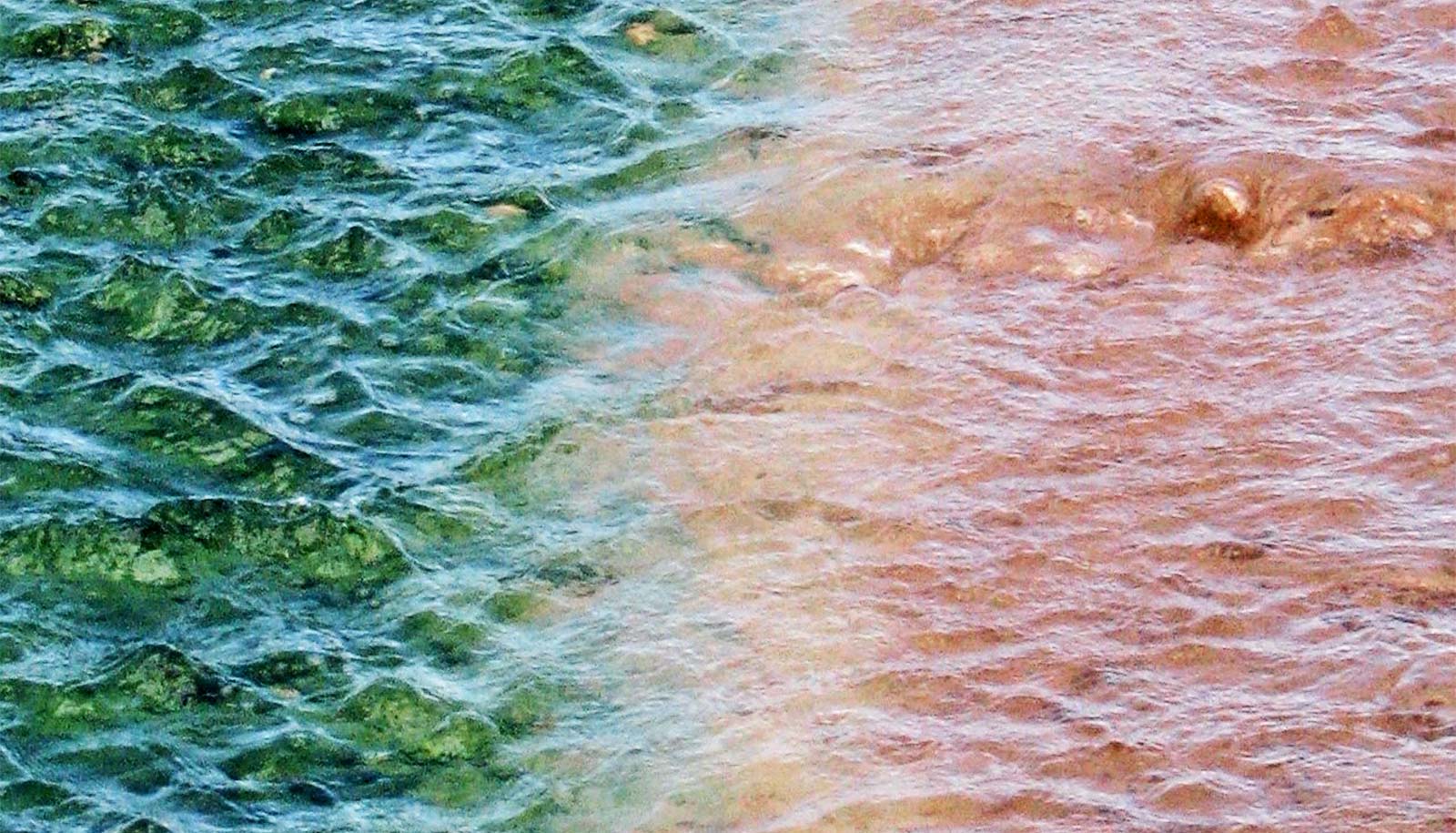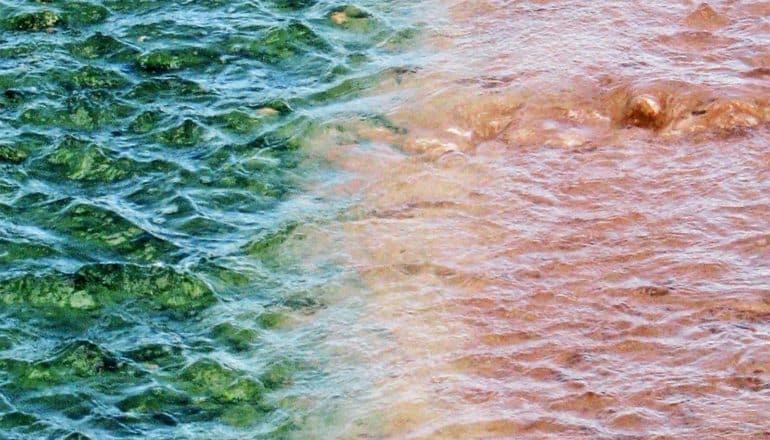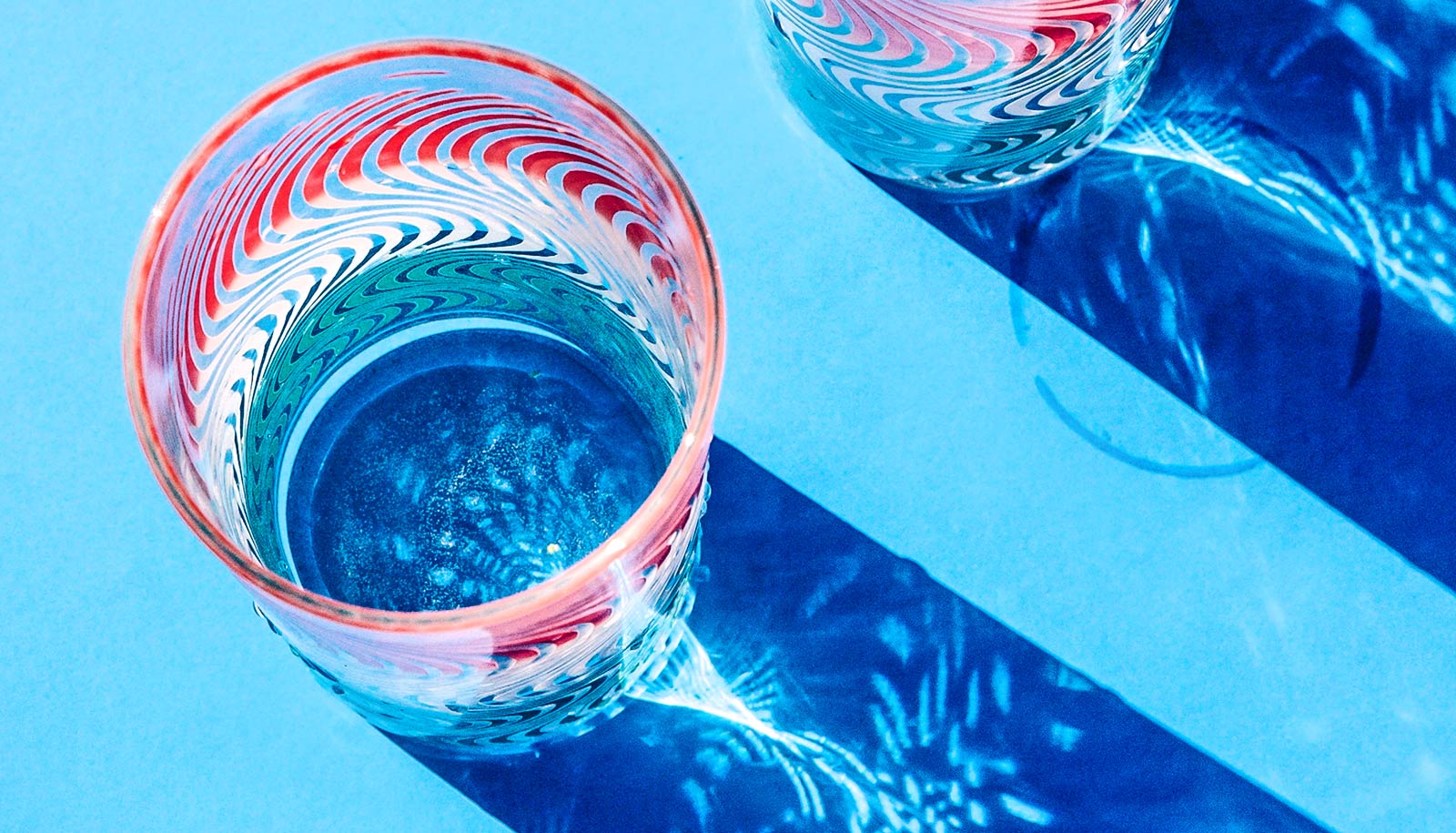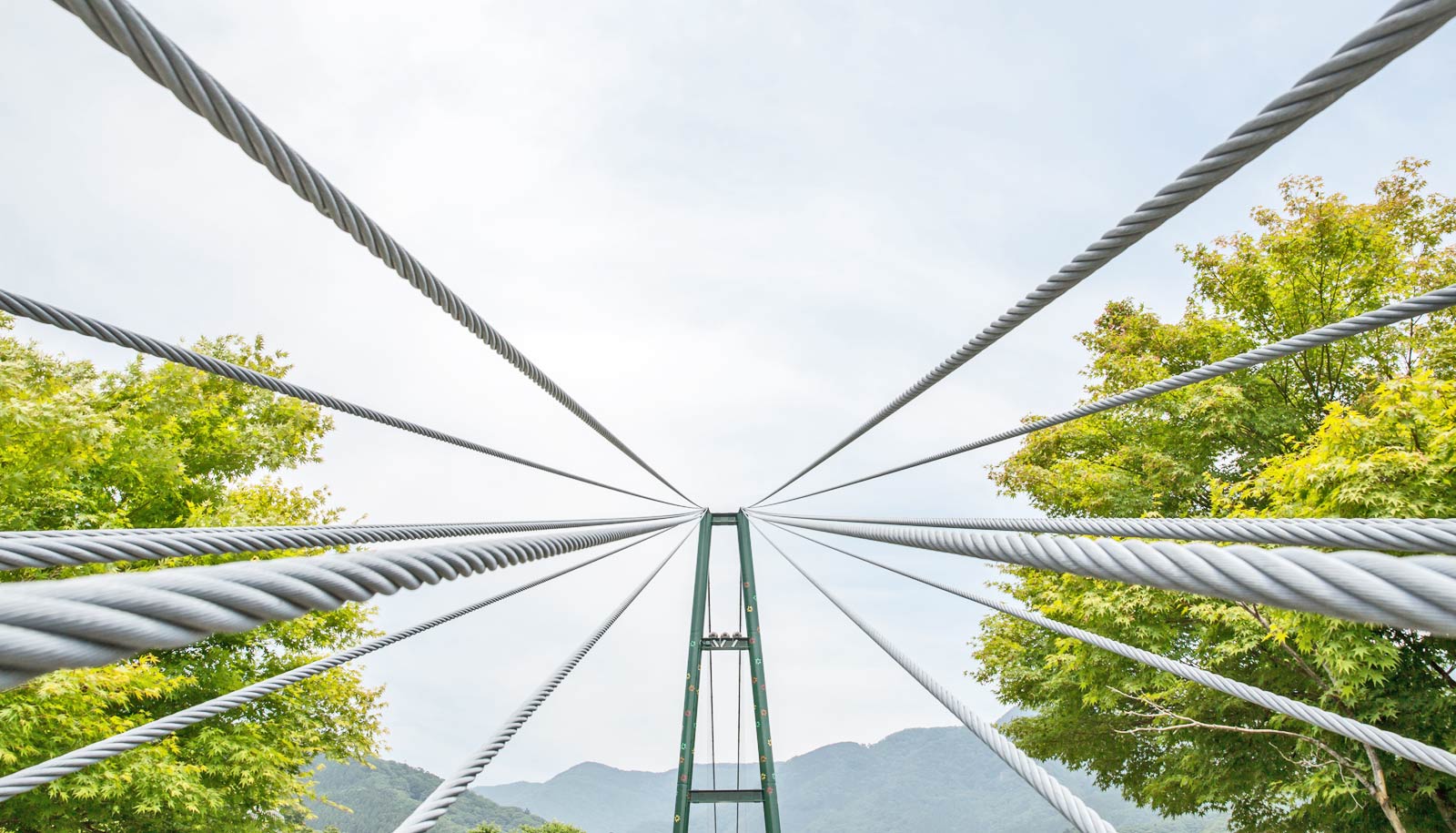
Cyanidiales species of red algae, which appear green in this photo because chlorophyll masks their red pigment, growing in a hot spring at Yellowstone National Park. (Credit: Debashish Bhattacharya/Rutgers)
Red algae’s stolen genes may lead to new fuels
Genes that red algae stole from bacteria to better adapt to hot springs could pave the way for designer algae that make fuel or clean up pollution.

Ten species of red algae stole about 1% of their genes from bacteria to cope with toxic metals and salt stress in hot springs, according to a new study.
These red algae species, known as Cyanidiales, also stole many genes that allow them to absorb and process different sources of carbon in the environment to provide additional sources of energy and supplement their photosynthetic lifestyle. The findings could lead to new fuels and chemicals that can fight pollution.
“The role of stolen genes in eukaryotes, which include most living things such as algae, has been hotly debated and many think it is unimportant and plays little to no role in their biology,” says coauthor Debashish Bhattacharya, a professor in the biochemistry and microbiology department at Rutgers University-New Brunswick.
“Our robust genome data provide the first major evidence that this is a false narrative and that adaptation to a challenging environment can be directly facilitated by stolen genes,” Bhattacharya says.
Researchers say that finding such phenomena in nature inspires them to figure out how gene theft happens. They can use these rules of nature to develop new genetic engineering methods in the lab to benefit people. They can do this by designing algae that produce fuels or chemicals that can clean up polluted sites because Cyanidiales can process toxic compounds and metals such as arsenic and mercury, according to Bhattacharya.
In the new study, scientists generated 10 new Cyanidiales genomes in the genus Galdieria that thrive in hot springs such as those at Yellowstone National Park, despite high temperatures and highly acidic conditions. Their goal was to determine whether these algae adapted to their extreme environment by stealing genes from resident, pre-adapted bacteria that made them resistant to the stresses. Genome analyses showed that about 1% of the red algal genes came from bacteria.
The next steps are to build genetic tools to study the red algal species and conduct more lab tests to determine if they turn on bacterial genes, as expected, under stress.
The research appears in the journal eLife.
Additional researchers are from Rutgers, Heinrich-Heine University in Germany, and Arizona State University.
Source: Rutgers University
The post Red algae’s stolen genes may lead to new fuels appeared first on Futurity.
Share this article:
This article uses material from the Futurity article, and is licenced under a CC BY-SA 4.0 International License. Images, videos and audio are available under their respective licenses.


